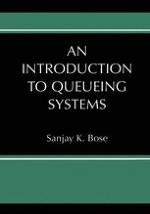2002 | Buch
Über dieses Buch
Queueing is an aspect of modern life that we encounter at every step in our daily activities. Whether it happens at the checkout counter in the supermarket or in accessing the Internet, the basic phenomenon of queueing arises whenever a shared facility needs to be accessed for service by a ]arge number of jobs or customers. The study of queueing is important as it gravides both a theoretical background to the kind of service that we may expect from such a facility and the way in which the facility itself may be designed to provide some specified grade of service to its customers. Our study of queueing was basically motivated by its use in the study of communication systems and computer networks. The various computers, routers and switches in such a network may be modelled as individual queues. The whole system may itself be modelled as a queueing network providing the required service to the messages, packets or cells that need to be carried. Application of queueing theory provides the theoretical framework for the design and study of such networks. The purpose of this book is to support a course on queueing systems at the senior undergraduate or graduate Ievels. Such a course would then provide the theoretical background on which a subsequent course on the performance modeHing and analysis of computer networks may be based.
Anzeige
